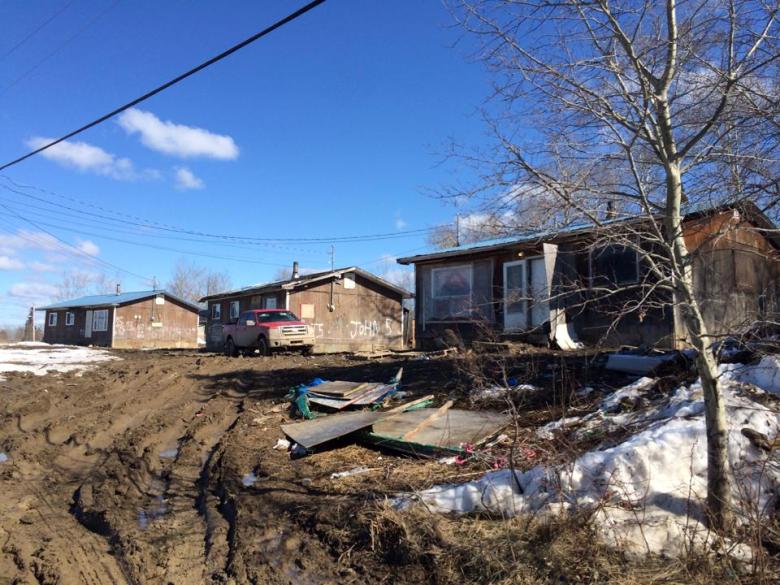A remote First Nation community in northwestern Ontario has been devastated following the deaths of at least four young people ages 12-16 who have taken their own lives so far this month.

Deputy Grand Chief Anna Achneepineskum of the Nishnawbe Aski Nation (NAN) said that two girls, both 16, died in Pikangikum, near the Ontario-Manitoba border, over the weekend.
The tragedy follows the deaths of a 12-year-old boy and a 12-year-old girl who died by suicide two weeks ago.
Achneepineskum confirmed that one of the girls who died on the weekend, Hazel Pascal, was a sister of Mikaia, a girl who took her life earlier this month in the small community of about 2,300 people.
“We are always responding to a crisis it seems,” Achneepineskum told Global News. “One of the young girls that took her life she had just buried her sister just days before, she too decided to take her life.”
“Just imagine living in that trauma state. And you’re trying to feel hope, it’s very hard to find that.”
READ MORE: 1 year after suicide crisis, Attawapiskat still lacking mental health resources

The deaths in Pikangikum are part of an epidemic of youth suicide that has shaken First Nations communities across northern Ontario.
There have now been at least 22 suicides within the 49 Nishnawbe Aski Nation territories since Jan. 1 of this year, according to statistics provided by a NAN spokesman.
There have been at least 11 deaths involving children between the ages of 10-16, and a NAN spokesman said those numbers are likely much higher as not all suicides are reported.
Earlier this month, a 15-year-old girl died by suicide in Nibinamik, Ont., north of Fort Hope, and a 21-year-old man from the Fort Severn First Nation died in a Thunder Bay medical centre.
Achneepineskum said she is working on putting together a “youth-focused team” including a youth counsellor to fly into Pikangikum for support. She said there needs to be a greater focus on long-term solutions to get at the root of the youth suicide crisis, including bullying prevention, family healing programs and regular access to youth trauma teams.
“We need to change things. The resources we have are always responding to a crisis,” she said. “There is not enough resources available to work on the prevention and proactive measures.”
READ MORE: Remote First Nations communities in Manitoba facing alarming suicide rates
Health Minister Jane Philpott called the recent deaths in Pikangikum “heartbreaking.”
“Every time you hear about another young life and you imagine the life of that young person and circumstances that may have led to their death is heartbreaking,” Philpott told Global News. “It’s devastating.
Philpott said she spoke today with Pikangikum Chief Dean Owen and that more mental health workers and nurses have been sent to the NAN communities.
“The community is exhausted and extremely shaken by what has taken place. There is a huge need for support, literally hundreds of people who are looking for counselling,” Philpott said.
A meeting has been scheduled on July 24 between Philpott, Ontario Health Minister Eric Hoskins and Nishnawbe Aski Nation Grand Chief Alvin Fiddler to address a permanent solution to the issue of youth suicide and will examine ways of giving Indigenous leaders faster control over health-care resources when a crisis occurs.
“There are structural changes that will need to take place that will take weeks or months to evolve so there can be more First Nations in the delivery of care, the decisions and the design of health systems,” the minister said.
The traumatic legacy of residential schools, history of colonialism, lack of access to proper housing and clean drinking water have contributed to the epidemic of youth suicide, Philpott said.
As part of its 2017 budget, the federal government pledged $118.2 million over five years to improve mental health services for First Nations and Inuit, in addition to $69 million announced in 2016.
WATCH: First Nations leaders slam Trudeau government for ‘dragging their feet’ on youth suicide crisis

Mike Kirlew, a doctor from Sioux Lookout who has worked in First Nations communities in northern Ontario for more than a decade, said there needs to be a “transformational” change in the Indigenous health-care system.
Kirlew said there needs to more equitable funding and regular access to permanent mental health care workers year round, not just increased resources following a crisis.
“No health-care system in the world is exclusively based on crisis response,” he said. “If your healthcare is entirely based on crisis response then all you’re going to have are crises to respond to.”
In January, Kirlew warned during a press conference in Ottawa following the deaths of 12-year-old Chantell Fox and her friend, Jolynn Winter, in Wapekeka, that more deaths would occur unless something changed.
“The cost of our complacency will be paid for, in full, in the cost of children’s lives. Period,” Kirlew said at the time.
He wants to see a health system that moves towards more community-led initiatives and one that focuses on patient centred care.
“Communities have put forward transformation proposals but they are still waiting for funding,” Kirlew said. “Changing the system from a colonial value system to an Indigenous patient centre valued system.”
He again warned that complacency will result in more lives lost.
“You’re actually seeing an acceleration of attempts and it’s happening in younger youth,” he said.
- Train goes up in flames while rolling through London, Ont. Here’s what we know
- Budget 2024 failed to spark ‘political reboot’ for Liberals, polling suggests
- Wrong remains sent to ‘exhausted’ Canadian family after death on Cuba vacation
- Peel police chief met Sri Lankan officer a court says ‘participated’ in torture




Comments